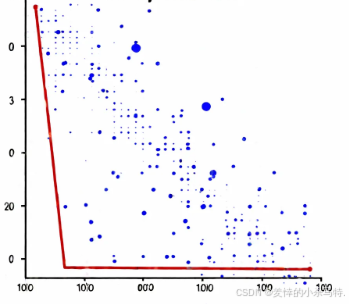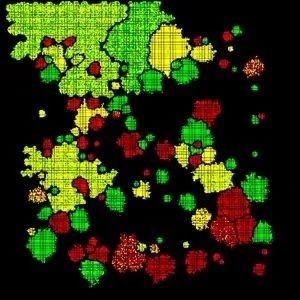【机器学习】目标识别应用程序:训练Tensorflow人脸目标检测模型
【机器学习】目标识别应用程序:训练Tensorflow人脸目标检测模型
如今,世界上即将面临一个重大危机,这个危机不是由人工智能带来的,而是由地球人的吃饭带来的问题。预计到2050年,地球上的人口将会达到90亿,为了满足大幅度增长的粮食需求,未来粮食产量至少需要达到现在粮食产量的两倍。但是,全球变暖与城镇化发展等不利因素正在制约着农作物的生长,粮食增产变得相当困难。

在几个世纪以前,工业革命与技术革新极大地提高了我们对于地球资源的利用程度,在当时看来,地球资源好像是取之不尽的。但是现在,我们却因为土地与水资源的短缺而感到紧张,由于天气状况的不稳定而感到烦恼。
如今,AI技术的革新与互联网的发展也许会有助于缓解、甚至是解决这些问题。
人工智能与智能农业
在过去的几年里,AI已经改变了大多数公司与组织的运作方式。如今,这些AI算法影响了很多你接触过的网络服务,例如谷歌的搜索引擎、Facebook的好友推荐系统以及亚马逊的产品推荐服务等等。
隐藏在这些服务转型背后的技术创新实际上是“机器学习”,它其实是一种算法,它通过处理与分析海量数据来找到常见模式,然后把这些模式转化为预测和行为结果。在“机器学习”被用于农业生产时,它就可以帮助防止农作物被破坏和浪费。这个实践被称作“精准农业”,它利用了实时数据、历史数据和机器学习算法,对较小的区域与较短的时间区间采取一些针对性行为,而不是在非常大的区域按照常规,不加分析地执行完全相同的操作。例如,我们应该在受虫害的某棵树或某根树枝,甚至是某片叶子上面使用少量的农药,而不是大面积地喷洒。这样,我们才可以有效地减少农药的支出,既可以避免农药的浪费,也可以避免农药过量使用带来的危害。

Prospera公司是“精准农业”实践的一个典型的例子,它希望把传统农业转化成一个数据驱动的实践。Prospera利用了设置在田地中的摄像头、传感器和收集到的微气象数据,对农作物进行监控并且发布农作物的实时分析。深度学习与计算机视觉算法通过对收集到的数据进行分析,从而了解并且报告农作物的生长状况。这对于早期农作物疾病的发现与处理非常重要,可以较少农作物的损害,从而增加粮食的产量。利用计算机视觉技术来分析农作物图片的优势之一在于,如果经过了很好的训练,算法能够随时发现那些即使是优秀的人类专家都很难发现的问题。在医学界的癌症诊断领域也使用了与之相似的方法与技术。
Arable是另外一家从事“精准农业”的公司,它利用了一种智能传感器来收集农田中的各种信息,例如降雨量、湿度、农作物的蓄水量、水压、微气候数据、树冠生物量以及叶绿素等等。这些数据可以帮助农民时时关注农作物的情况,根据实际的测量值而不是依靠主观经验与猜测,从而作出农作物相关的预测,而且有针对性地采取一些自动化措施。这些“精准农业”的操作实际上非常简单,就像我们根据湿度数据来控制不同的田地与区域一样。该领域的其他公司还在试着在没有硬件设施的情况下进行精准农业的操作。ConserWater公司利用了NASA的卫星图像、天气数据和深度学习算法来预测农作物的需水量,虽然这些预测没有传感器与摄像头做出的预测精准,但是它的投入成本相对较低,这实际上降低了精准农业的门槛。
AI技术在农业方面的部署面临的一个主要的挑战就是硬件设施在农田覆盖的联通性非常差。这限制了数据的收集,而数据收集正是机器学习算法的关键。但是随着人们对于这个领域兴趣的不断增加,越来越多的公司开始行动,这些障碍正在不断地被克服。

人工智能不止智能农业
AI技术能够提高粮食的产量、减少浪费,但是这并不是其发挥作用的唯一领域。在实验室与研究中心,机器学习算法可以帮助培育更好的植物基因,创造更安全、高效的农作物保护产品与化肥,而且开发更多的农产品。事实上,IA在这些领域的介入更加成熟,因为这个领域的数据更加丰富,数据获取的速度也更快。
粮食的损失与浪费很可能会发生在收获与运输的过程中。举个例子,不合适的地形状况会在收获的过程中导致大量的农作物损耗,而且,农作物在运输的过程中天气状况也会影响农作物的产量,例如在运输的过程中的降雨会导致运输延迟,对农作物产生不利的影响。
这个问题我们可以利用土壤传感器与天气分析系统解决,机器学习算法可以根据一些必要的数据,比如土壤湿度、未来天气状况和运输途中将要面临的潜在影响因素,预测出收获的最佳时机。自动化与协调性种植、农作物收获与分配可以尽量缩减农作物在运输的时间,从而减少农作物的损耗。随着硬件联通性的不断完善以及AI技术的不断发展,我们可以期待自动化的、数据驱动的未来农业的发展方向。
这些技术革新究竟能不能解决不断增长的人口的吃饭问题,我们还不得而知。但是就现在来说,AI才是我们的最佳选择。
- 人工智能与智能农业
- 人工智能不止智能农业

腾讯云开发者

扫码关注腾讯云开发者
领取腾讯云代金券
Copyright © 2013 - 2025 Tencent Cloud. All Rights Reserved. 腾讯云 版权所有
深圳市腾讯计算机系统有限公司 ICP备案/许可证号:粤B2-20090059 深公网安备号 44030502008569
腾讯云计算(北京)有限责任公司 京ICP证150476号 | 京ICP备11018762号 | 京公网安备号11010802020287
Copyright © 2013 - 2025 Tencent Cloud.
All Rights Reserved. 腾讯云 版权所有















